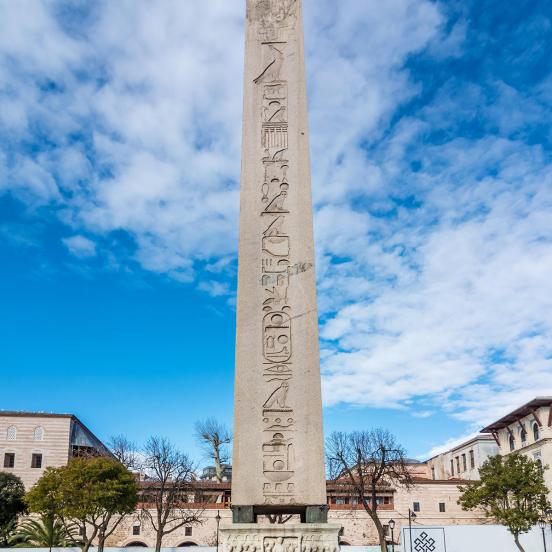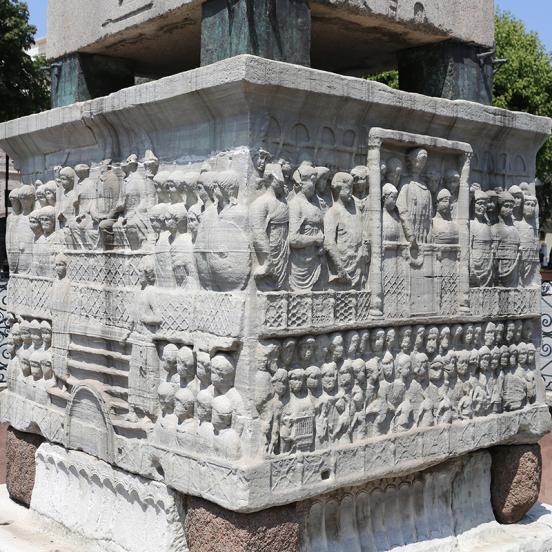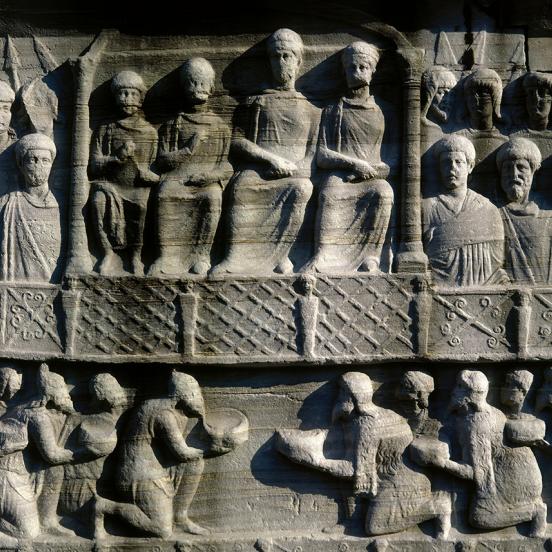Obelisk of Theodosius
Constantine I (the Great) had a number of artworks and statues transported to his new capital Constantinopolis (Constantinople, today Istanbul). His successor Theodosius I (the Great) (379-395) had an Egyptian obelisk erected to commemorate his victory over the counter-emperors at the turning point of the race course (hippodromos, circus), a part of Constantinopolis’s palace complex. The 19.6-metre-tall obelisk stands on a two-level marble pedestal decorated with relief scenes. Latin and Greek inscriptions were carved on two sides at the lower level, the other two sides depict the erection of the obelisk and a chariot race. In the top band of the upper level the emperor and his entourage can be seen in a separate box flanked by officials and guards. Underneath barbarian envoys present their gifts to the emperor, and chariot race spectators are lined up together with musicians and dancers on the south-eastern side. A Christogram on an insignia appears next to the Christian emperor on the north-eastern side.



